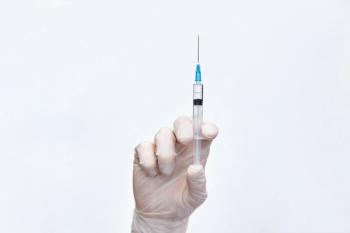
How HPV Self-Sampling Kits Save Money and Improve Screening Rates
In a recent trial, investigators found increased rates of screening when human papillomavirus (HPV) self-sampling kits were mailed to participants, and that this process costs less than usual care.
Mailing human papillomavirus (HPV) self-sampling kits to women overdue for cervical cancer screening is cost-effective and increases screening rates, according to a recent study1 published in JAMA Network Open.
Worldwide, a reduction in cervical cancer incidence and mortality has been linked to cervical screening, as addressing precancers caused by high-risk HPV can prevent most cervical cancers. As HPV samples can be collected by both clinicians and individuals, HPV-only screening may be performed in homes. This reduces the need for office visits and addresses barriers to screening.
Investigators performed an economic evaluation of the Home-Based Options to Make Cervical Cancer Screening Easy (HOME) trial, a study comparing mailed HPV self-sampling to in-clinic screening.
The HOME trial occurred from February 25, 2014, to August 29, 2016, and contained 19,851 individuals, randomized to control and intervention groups. Follow-up lasted through February 25, 2018. Economic data of participants from June 2, 2019, to March 31, 2021, was collected for the economic evaluation.
Electronic medical records (EMRs) were used to identify participants in the HOME trial. Data on time since last Papanicolaou test and race and ethnicity were collected.
Inclusion criteria included being female and aged 30 to 64 years, having a Kaiser Permanente Washington (KPWA) primary care physician, being enrolled for at least 3 years and 5 months without having a Papanicolaou (pap) or high-risk HPV test, and not having a hysterectomy.
Usual care was given to the control group in the HOME trial, consisting of outreach to attend a Papanicolaou screening. Participants in the intervention group also received usual care, alongside a mailed HPV self-sampling kit which could be returned to a KPWA clinical laboratory.
Diagnosed grade 2 or higher cervical intraepithelial neoplasia (CIN2+) and treated CIN2+ were the primary outcomes measured in the trial. An abnormal screening result within 6 months of randomization defined diagnosed CIN2+, while treatment within 6 months of diagnosis defined treated CIN2+.
To conduct an economic evaluation, investigators used data from the HOME trial on screening uptake, collected through a receipt of cervical cancer screening within 6 months of randomization. The incremental cost-effectiveness ratio (ICER) for screening uptake was measured as the primary outcome of the evaluation.
The value of resources for implementing mailed HPV kits during the HOME trial was used to measure intervention costs. Two dimensions were used to measure costs for pap tests: a KPWA-based or Medicare-based perspective and a wellness visit.
Of the 19,851 participants in the HOME trial, 9960 were in the intervention group and 9891 were in the control group. Participants in both groups did not display significant differences in baseline characteristics.
Greater screening uptake was seen in the intervention group compared to the control group, with 1440 participants receiving an in-clinic pap screening and 1206 returning mailed HPV kits. CIN2+ diagnosis was seen in 12 individuals in the intervention group and 8 in the control group.
Among the total sample, ICERs ranged from $85.84 to $146.29 per additional screening. When compared to usual care, these ICERs were close to many individual procedure unit costs, and sometimes lower.
Cost-effectiveness was achieved at lower willingness to pay values for individuals in the intervention group aged 50 to 64 years, and whose last pap test was more than 3.4 years and less than 5 years prior. Overall, cost-effectiveness was found for mailing HPV self-sampling kits.
Reference
1. Meenan RT, Troja C, Buist DSM, et al. Economic evaluation of mailed home-based human papillomavirus self-sampling kits for cervical cancer screening. JAMA Netw Open. 2023;6(3):e234052. doi:10.1001/jamanetworkopen.2023.4052
Newsletter
Pharmacy practice is always changing. Stay ahead of the curve with the Drug Topics newsletter and get the latest drug information, industry trends, and patient care tips.




